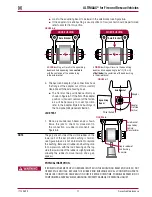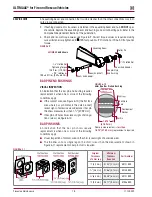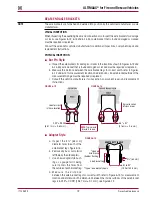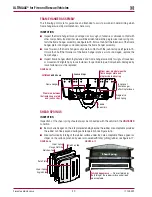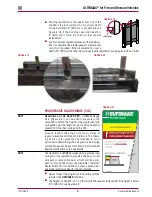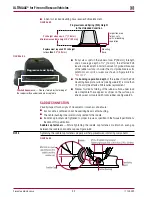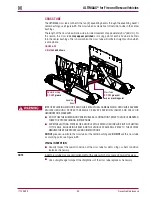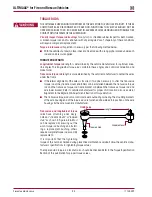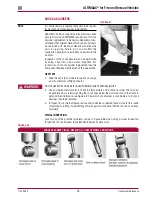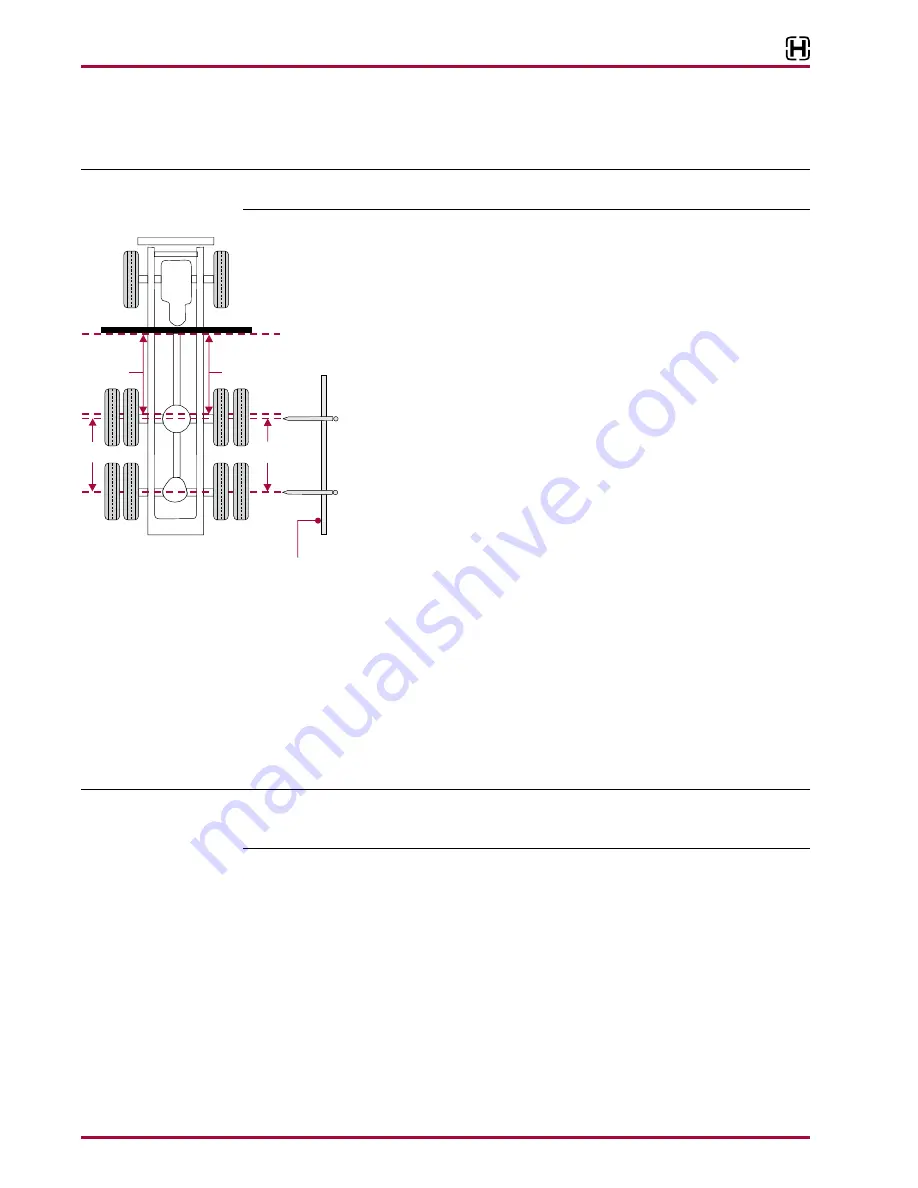
Alignment & Adjustments
28
17730-299
ULTIMAAX
®
for Fire and Rescue Vehicles
Proper alignment is essential for maximum ride quality, performance, and tire service life . The fol-
lowing recommended alignment procedure as described below, should be performed if excessive
or irregular tire wear is observed .
NOTE
Proper vehicle alignment can only be achieved when all axles are aligned to the vehicle’s
centerline and the steering axle’s caster, camber and toe-in settings are within specifications .
FIGURE 7-2
INSPECTION
1 . Use a work bay with a level, flat surface .
2 . Relax the suspension by slowly moving the vehicle back and forth several
times in a straight line . This will slacken or loosen the suspension as the
vehicle is positioned . End with all wheels positioned straight ahead .
3 .
DO NOT
set the parking brake . Chock the front wheels of the vehicle .
4 . Verify the vehicle system air is at full operating pressure .
5 . Verify all suspension components are in good condition . Repair or replace
any worn or damaged suspension components before proceeding with the
alignment process .
6 . Ensure all drive axle tires are at the same size .
7 . Securely clamp a six-foot piece of
STRAIGHT
bar stock or angle iron across
the lower frame flange as shown in Figure 7-2 . Select a location for the bar
stock or angle iron as far forward of the drive axle as possible where compo-
nents will not interfere .
8 . Accurately square the bar stock or angle iron to the frame using a carpen-
ter’s square .
9 . Using a measuring tape, measure from the straight edge to the forward face of the front drive
axle arms on both sides of the vehicle as shown in Figure 7-2, dimensions
A
and
B
.
10 . Calculate the difference between measurements
A
and
B
.
a . If the
front
drive axle is within vehicle manufacturer’s specifications, proceed to check the
rear drive axle (Step 11) .
b . If alignment of the
front
drive axle
IS NOT
within the vehicle manufacturer’s specifications,
then the alignment of this axle
MUST
be corrected
BEFORE
measuring the rear drive axle
alignment (Step 11) .
c . If the suspension is equipped with bar pin end bushings, correct the alignment of this axle
by following the bar pin alignment instructions in this section .
NOTE
Since the remaining drive axle will be aligned relative to the front drive axle, it is essential that the
front drive axle is aligned within the vehicle manufacturer’s specifications prior to the alignment
of the remaining drive axle .
11 . Using a trammel bar, measure the distance from the spindle center of the
front
drive axle to the
spindle center of the rear drive axle on both sides of the vehicle; see Figure 7-2,
C
and
D
.
12 . Calculate the difference between measurements
C
and
D
.
a . If the measurements are within the vehicle manufacturer’s specifications, then the
rear
drive axle alignment is acceptable .
b . If alignment of the
rear
drive axle
IS NOT
within the vehicle manufacturer’s specifications,
then the alignment of this axle
MUST
be corrected .
c . If the suspension is equipped with bar pin end bushings, correct the alignment of this axle
by following the Bar Pin with Shims Alignment instructions in this section .
13 . Recheck measurements to confirm adjustments . Repeat Steps 10 through 12 until the correct
alignment is achieved .
14 . After all drive axles are aligned, check the pinion angle of each drive, refer to the Axle Pinon
Angle in this section .
D
Trammel
Bar
A
B
C
FRONT
▲




